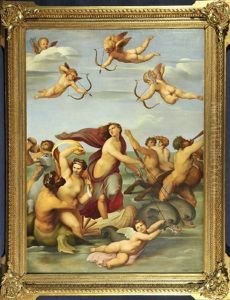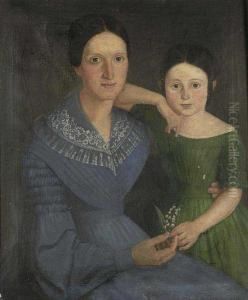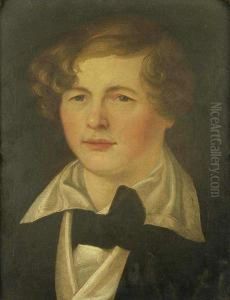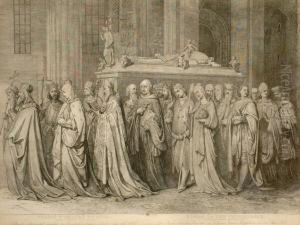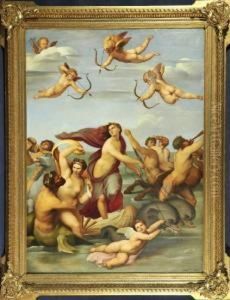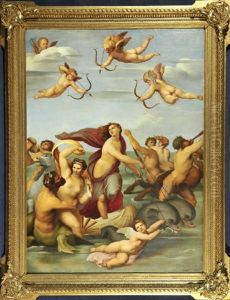Josef Vojtech Hellich Paintings
Josef Vojtěch Hellich was a notable Czech painter and illustrator, born on December 16, 1807, in Litomyšl, which at that time was part of the Austrian Empire. He was a significant figure in the Czech National Revival, a cultural movement that aimed to revive Czech language, culture, and national identity within the Habsburg Monarchy. Hellich's work was deeply influenced by the Romanticism of the 19th century, and he is known for his landscape paintings, portraits, and patriotic works.
Hellich's education in art began at the Prague Academy, where he studied under the guidance of Christian Ruben, a painter of historical scenes and landscapes. After finishing his studies, Hellich embarked on a journey through Europe, which was common practice for artists at the time. He traveled to Italy, where he was greatly inspired by the works of the Old Masters, and to Germany, where he familiarized himself with the latest trends in art.
Upon returning to Prague, Hellich became actively involved in the artistic and cultural life of the city. His oeuvre includes a wide variety of works, from altarpieces for churches to illustrations for books. He also painted a number of portraits of important Czech figures of the day, contributing to the development of national identity and pride. His landscapes capture the beauty of the Czech countryside and are characterized by their detailed realism and sensitivity to light and atmosphere.
Hellich was also an educator, teaching at the Academy of Fine Arts in Prague, where he influenced a generation of young Czech artists. His teaching and his art both played an important role in shaping the Czech artistic landscape of the 19th century.
He died on November 3, 1880, in Prague, leaving behind a legacy as one of the Czech Republic's distinguished artists who contributed to the burgeoning sense of national identity in the arts. His works are preserved in various collections, including the National Gallery in Prague, and continue to be celebrated for their contribution to Czech culture.
